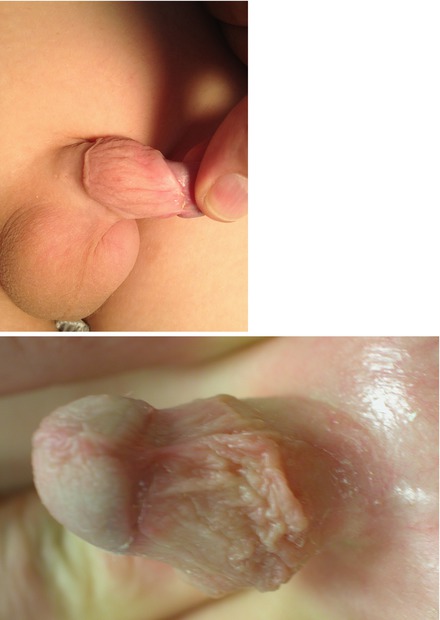Figure 15.1
Ideal circumcision line should be close to the glans as possible as shown in the figure

Figure 15.2
“Entrapped penis”. The circumcision line has moved distal to the glans and retracted

Figures 15.3 and 15.4
In the traditional Guillotine-type circumcision, circumcision line is almost in the middle of the penile shaft
Another important matter is the amount of excision of the prepuce. Too much excision may cause painful erections and premature ejaculation after puberty. Proximal line of excision should be marked while the penis is stretched. Besides, suprapubic fat tissue, to which penis is embedded, may cause difficulty to determine the amount of prepuce to be excised. By simply pressing suprapubic area, the length of the penis under erection may be estimated and proximal line is marked accordingly. Distal incision is made after stripping prepuce as described above. Starting with distal incision is preferred.
Besides enhancing cosmesis, frenulum of prepuce of penis is believed to be one of the most two sensitive specific locations of the penis. However, the frenulum is cut in 26–33 % of circumcised normal patients without any short frenulum or frenular chordee [1, 2]. Frenulum is frequently cut in Gomco clamp type circumcisions, and many surgeons approximate and suture cut sides of proximal frenulum to reconstruct it. Ignoring this small detail leads to loss of circumferential inner preputial collar on the ventral side of the penis as an adverse cosmetic effect. It may also create glandular tilt or chordee on erection if ventral skin is tight. Frenulum is usually untouched in Guillotine-type circumcisions, but this is not a reason to defend that insecure technique. Nevertheless, the open sleeve technique is the best way to preserve frenulum.
Stay updated, free articles. Join our Telegram channel

Full access? Get Clinical Tree






